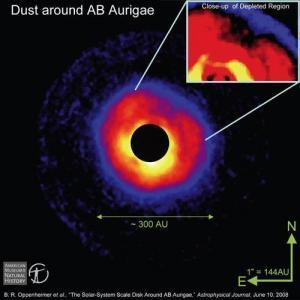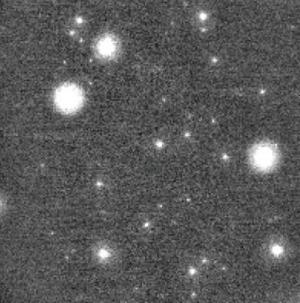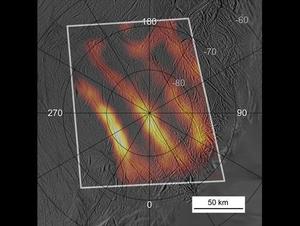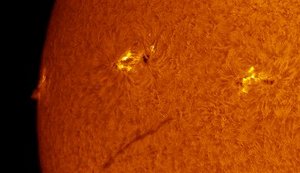Astrophysicists have a new window into the formation of planets. Ben R. Oppenheimer, Assistant Curator in the Department of Astrophysics at the American Museum of Natural History, and colleagues have imaged a structure within the disk of material coalescing from the gas and dust cloud surrounding a well-studied star, AB Aurigae.

|
| ©American Museum Of Natural History
|
| Coronagraphic image of the polarized light around the star AB Aurigae, showing the distribution of dust in the inner part of a complex disk of material around this star. The shaded middle region is covered to block out light from the star. The inset at upper right is a blow-up of the depleted region of dust to the NNW of the star.
|
Within that structure, it appears that an object is forming, either a small body currently accreting dust or a brown dwarf (a body intermediate between stars and planets) between 5 and 37 times the mass of Jupiter. The observations, accepted for publication in the Astrophysical Journal, represent a significant step toward direct imaging and study of exoplanets (planets orbiting stars other than the Sun), and may bear on theories of planet and brown dwarf formation.








